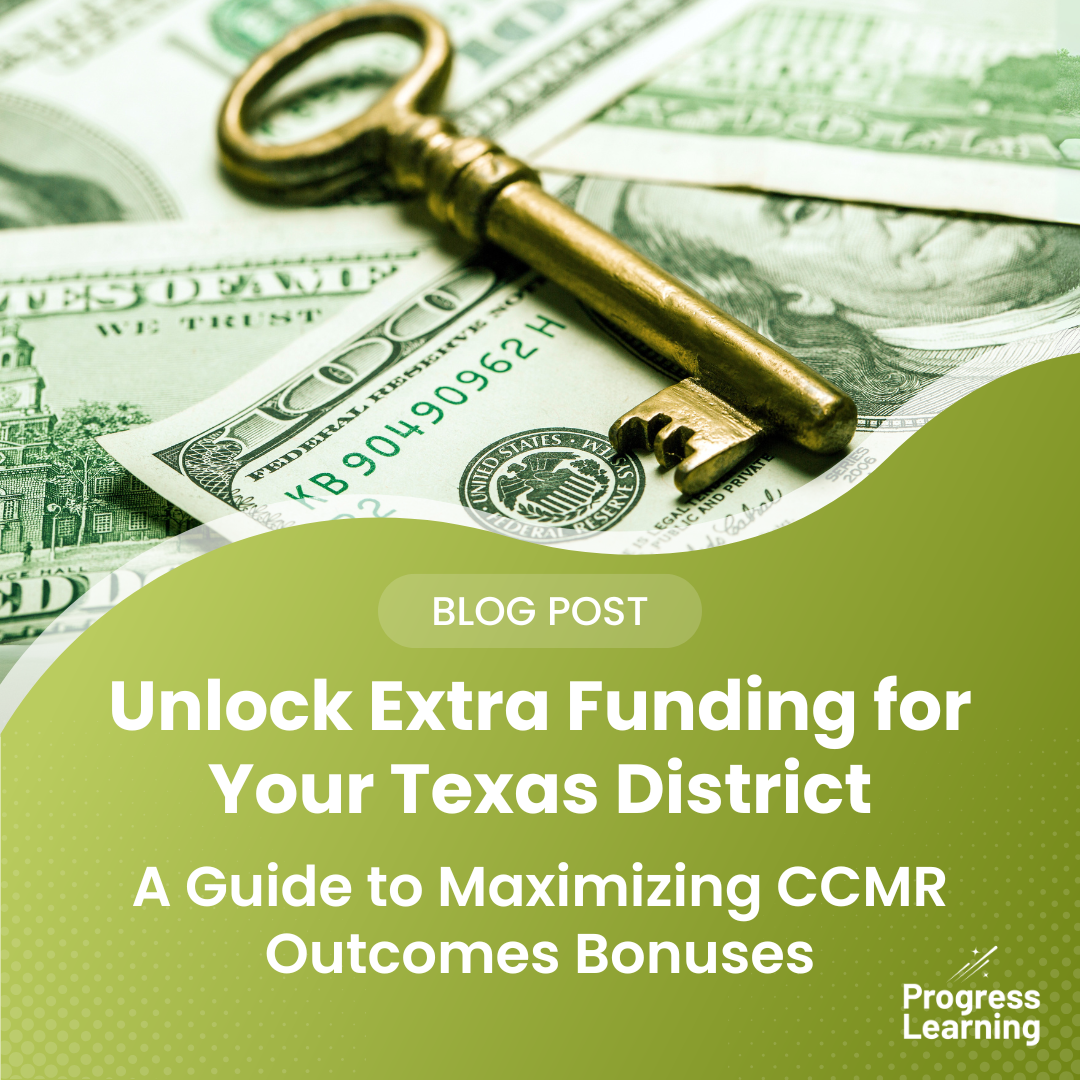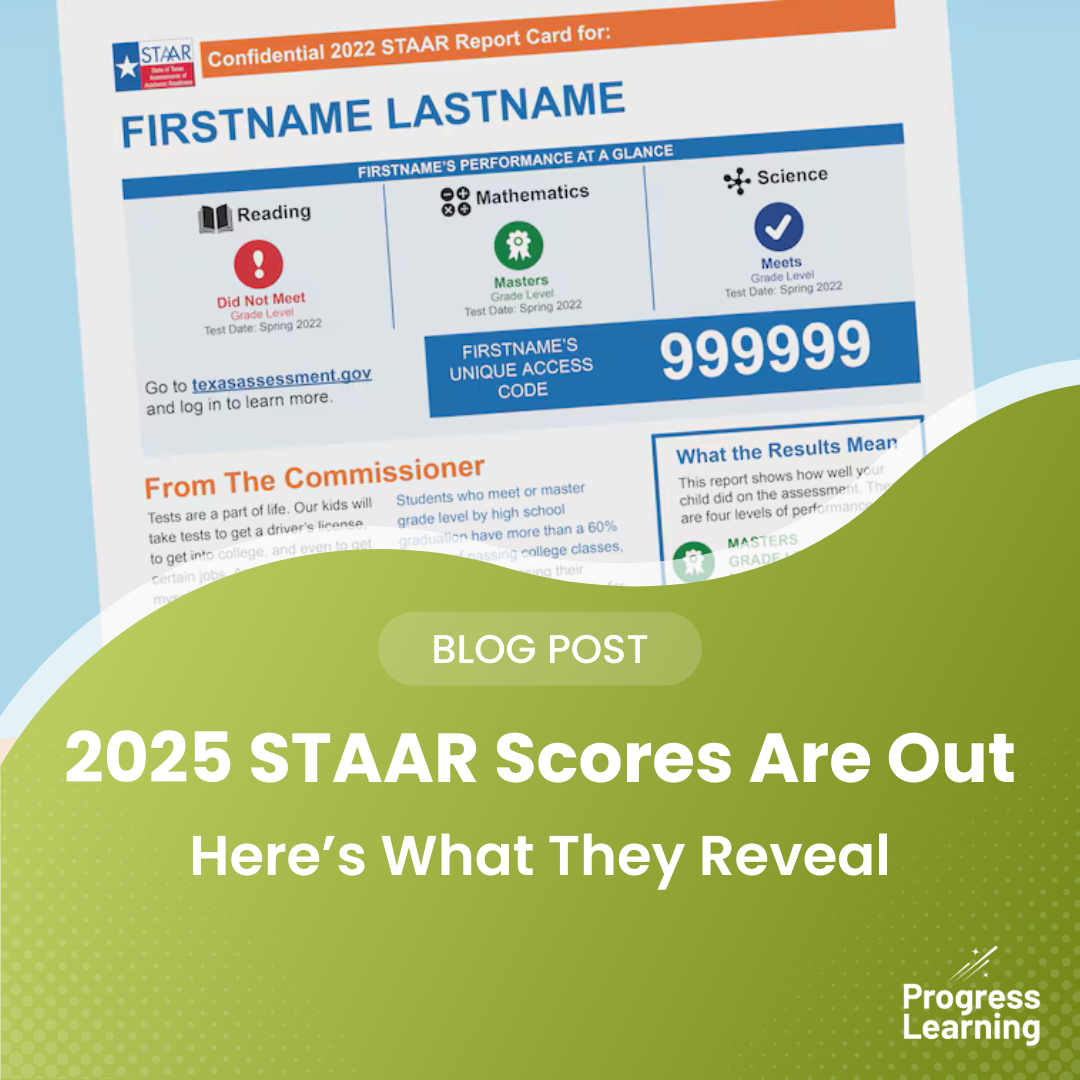New STAAR® Item Types with Example Questions
Written by Rheanne Renzenbrink. Rheanne is a former secondary English teacher in Texas with over a decade of experience in the classroom, standardized testing, teaching with TEKS, and helping students succeed on STAAR® exams.
As a former secondary English teacher with over 10 years of experience in Texas classrooms, I’ve seen firsthand how STAAR® has evolved over the years. The latest redesign brings some of the biggest changes yet—particularly in question types. Gone are the days of nearly all multiple-choice questions. Instead, students now face a variety of Technology-Enhanced Items (TEIs) that require deeper thinking, multiple responses, and interactive engagement with test content.
For many students, these new TEIs can be a challenge. They now have to type responses, drag and drop answers, and write full-length essays—all within a timed test environment. Understanding these changes is key to helping students succeed, so let’s break down the trickiest new STAAR® item types, why students struggle with them, and how we can better prepare them, including looking at interactive example questions from the Progress Learning platform below.
Why the Change?
The STAAR® redesign, implemented in the 2022–2023 school year, was driven by House Bill (HB) 3906 (2019) and HB 3261 (2021) to better align assessments with classroom instruction. One of the biggest shifts is the introduction of new question formats and a multiple-choice cap, meaning no more than 75% of the test can be multiple-choice.
As a teacher, I often had students who could guess their way through multiple-choice questions but struggled when asked to explain their thinking. The new item types force students to demonstrate deeper understanding, which is great for learning—but also a big adjustment.
STAAR® 2.0: New Question Types Overview
The table below provides an overview of each new STAAR® question type, a brief description, which subjects include it, and whether Progress Learning supports it for practice.
| Question Type | Description | Subjects | Supported by Progress Learning? |
| Equation Editor | Students enter fractions, expressions, equations, or inequalities. | Math (3–8, EOC) | ✅ Yes |
| Text Entry | Students type a number, word, or phrase as a response. | Math (3–8, EOC), RLA (6–8, EOC), Science (8), Social Studies (8) | ✅ Yes |
| Graphing | Students plot points, draw lines, or adjust bar graphs. | Math (3–8, EOC) | ✅ Yes |
| Number Line | Students plot points, draw rays, or mark solutions on a number line. | Math (6–8, EOC) | ✅ Yes |
| Inline Choice | Students select the correct response from a drop-down menu. | Math (3–8, EOC), RLA (3–8, EOC), Science (8), Social Studies (8) | ✅ Yes |
| Hot Spot | Students click one or more specific areas on a graphic. | Math (3–8, EOC), Science (5, 8, EOC), Social Studies (8) | ✅ Yes |
| Hot Text | Students select highlighted words or sentences as textual evidence. | RLA (3–5, 8, EOC) | ✅ Yes |
| Fraction Model | Students divide and shade sections to represent a fraction. | Math (3–5) | ✅ Yes |
| Drag and Drop | Students drag words, numbers, or symbols into correct locations. | Math (3–8, EOC), Science (5, 8, EOC), Social Studies (8) | ✅ Yes |
| Multipart | Students answer a two-part question, often explaining their reasoning. | Math (3–8, EOC), Science (5, 8, EOC), Social Studies (8) | ✅ Yes |
| Match Table Grid | Students match statements or objects to categories in a grid. | Math (6–8, EOC), RLA (8, EOC), Science (8), Social Studies (8) | ✅ Yes |
| Multiselect | Students select multiple correct answers from a list. | Math (3–8, EOC), RLA (3–8, EOC), Science (5, 8, EOC), Social Studies (8) | ✅ Yes |
| Short Constructed Response | Students write a brief answer to explain or analyze. | RLA (3–8, EOC), Science (5, 8, EOC), Social Studies (8) | ✅ Yes |
| Extended Constructed Response | Students write an in-depth essay analyzing or evaluating a passage. | RLA (3–8, EOC) | ✅ Yes |
Breaking Down the Toughest Question Types
The new STAAR® format presents unique challenges for students, especially those who struggle with written responses and digital tools. Below are the three most challenging question types, why they’re difficult, and how to help students master them.
Short Constructed Response
What It Is
Students must provide a brief written response to answer a question. These appear in Reading Language Arts (RLA), science, and social studies.
Why It’s Challenging
Students often struggle with short constructed responses because they:
- Write one-word or incomplete answers.
- Forget to use evidence from the passage.
- Overcomplicate their responses with unnecessary details.
Tips for Success
- Use the RACE strategy (Restate, Answer, Cite, Explain) to structure responses.
- Encourage students to underline key details in the passage before writing.
- Remind them to be concise—they don’t need a full paragraph.
Example Question – 5th Grade Science
Extended Constructed Response (Essay)
What It Is
Students must write a longer response (up to 2,300 characters) explaining, analyzing, or evaluating information from a passage. These appear in RLA (grades 3–8, English I & II) and require students to use textual evidence to support their answer.
Why It’s Challenging
Many students struggle with extended responses because they have difficulty:
- Understanding what the prompt is asking.
- Structuring their response logically.
- Using specific textual evidence instead of vague generalizations.
Tips for Success
- Teach students to break down the prompt before writing.
- Require at least two pieces of textual evidence in every response.
- Use graphic organizers to help students plan their essay.
Example Question – 3rd Grade Reading
Drag and Drop
What It Is
Students must click and drag answer choices to the correct locations on a chart, sentence, or diagram. These appear in math, science, social studies, and RLA.
Why It’s Challenging
Students often struggle with drag-and-drop questions because they:
- Have trouble using digital tools.
- Don’t double-check all possible answer choices before placing them.
- Try to rush through without fully reading the directions.
Tips for Success
- Have students practice online drag-and-drop activities before test day.
- Remind them that all answer choices must be used unless the directions say otherwise.
Encourage them to re-read the instructions before submitting.
Example Question – Biology
How Does Progress Learning Help?
I’ve seen firsthand how targeted practice makes a difference in student success. That’s why at Progress Learning, we provide authentic STAAR® practice that mirrors the new question types—so students feel confident and prepared on test day.
- TEKS-Aligned Content: Every question matches Texas standards.
- Comprehensive Item Bank: Over 200,000 questions, including STAAR®-aligned TEIs.
- Authentic STAAR® Practice: Students get comfortable with the exact types of questions they’ll see on test day.
By integrating standards-aligned questions into daily practice, students will feel more confident and prepared when they take STAAR®.
Explore how Progress Learning can help your students master the new STAAR® test!


